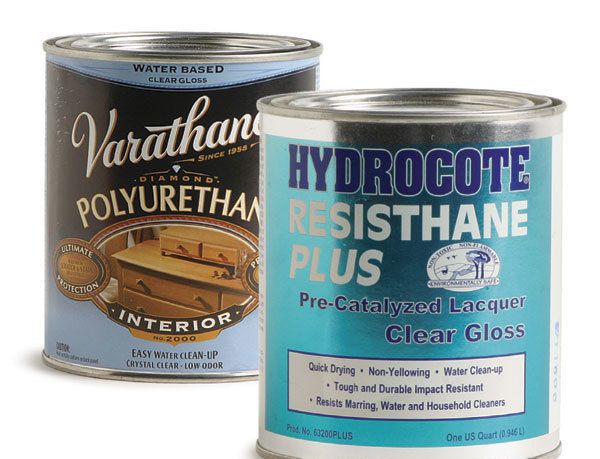
Synopsis: Water-based finishes have long promised fast drying time, low odor, easy cleanup, and nonflammability. But they have a checkered past. Early versions were hard to apply and gave many woods a cold, dead look. However, today’s formulations match the clarity, hardness, and durability of most, if not all, of the solvent-based clear-coat cousins that they are increasingly replacing. In this article, Jeff Weiss, founder of a company that makes water-based finishes, sheds some light on their history, describes the increasingly sophisticated science behind them, and gives some tips on how to apply them.
No finishing topic creates more controversy, head scratching, and general mayhem than water-based finishes. much of the misunderstanding stems from the rather checkered history of these finishes. They’ve always promised fast drying time, low odor, easy cleanup, and nonflammability, but early versions were hard to apply and gave many woods a cold, dead look.
However, today’s formulations match the clarity, hardness, and durability of most, if not all, of the solvent-based clear-coat cousins that they are increasingly replacing. As the founder of a company that makes water-based finishes, I’ll shed some light on their history, describe the increasingly sophisticated science behind them, and give some tips on how to apply them. In this way, I hope to give you the confidence to make the switch.
Water-based finishes started life on the floor
The history of many of today’s water-based wood-finish resins can be traced back more than a century to the floor-care industry. early developments included water emulsion paste-wax blends for protecting wood and tile floors. These blends had the advantage of being lower in odor and less flammable than solvent versions. After the Second World War, we began to see the development of polymer acrylates for tile floor finishes and waterborne urethanes that featured the early polyester, and later polycarbonate, resins used to waterproof fabric and leather. In the early 1980s, these technologies became the first generation of water-based finishes for wood floors.
Water-based latex and acrylic paints were developed before water-based clear finishes for two reasons: First, the market volume for paint is much greater; second, paint was easier to develop because early water-based resins demonstrated poor clarity and were better suited to blending with pigments.
In many ways, water-based clear finishes are following the same track as water-based paints, but are about 20 years behind in terms of market share. In the early 1980s, solvent-based wood finishes occupied almost 100% of the industrial and DIY market. Today, their share is estimated at 70% and is rapidly declining, with most of the decline within the last seven years.
From Fine Woodworking #194
For the full article, download the PDF below:
Fine Woodworking Recommended Products

Foam Brushes

Osmo Polyx-Oil

Odie's Oil




















Log in or create an account to post a comment.
Sign up Log in